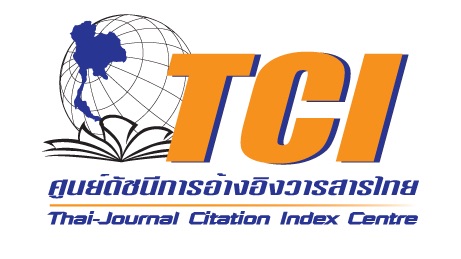A Study of Thai-Chinese Translation Strategies for Educational Institutions Names in Phetchabun Province
Keywords:
Translation Strategies, Names of Education Institutions, Phetchabun Province, ChineseAbstract
This research had objectives to 1) to study the strategies used in translation the names of educational institution. 2) to offer the suggestions for Thai to Chinese translation. The information gathering the names of the educational supervisor of the Secondary Educational Service Area of Phetchabun, and the network of Chinese language teachers in total of 45 names by survey questionnaires and interviews of representatives of Chinese language teachers of every educational institution. After that analyzed the strategies used in translation according to the theories of translation. The result of this research found out that the strategies that appear in the names of educational institution translation of Phetchabun province are in five translation strategies: transliteration, semantic translation, addition, omission and using more than one strategy. If the names had multiple translation strategies were utilized for rendering the name of a singular institution. In terms of proposing translation guideline. If Thai name which consisted of the proper nouns that were already translated to Chinese and widely used, we are able to use them directly. But if we would like to use the transliteration tactic, Chinese words with homophonous and proper semantic sense to Thai words should be chosen. Certain elements of the institution’s name may be left untranslated or omitted for conciseness. Names of educational institutions under local administrative organizations can be translated from their intended meaning; in contrast, the names of those that are dispersed across regions may be rendered following its affiliated institute. When engaging in re-translation, exercising care during the transcription phase is required. More importantly, translated names should be proofread and determined as official source of information as safeguards against one’s forgetfulness and the continual re-translation.
References
กนกพร นุ่มทอง และศิริวรรณ ลิขิตเจริญธรรม. (2562). หลักและข้อควรระวังในการแปลจีน-ไทย ไทย-จีน. วารสารจีนศึกษา มหาวิทยาลัยเกษตรศาสตร์, 12(2), 105-151.
กนกพร นุ่มทอง. (2554). ตำราการแปลภาษาไทยเป็นภาษาจีน (พิมพ์ครั้งที่ 2). สถาบันขงจื๊อ มหาวิทยาลัยเกษตรศาสตร์.
กรวรรณ พรหมแย้ม. (2565). การศึกษาการแปลชื่อถนนภาษาไทยเป็นภาษาจีนในเขตเทศบาลนครเชียงราย. วารสารจีนศึกษา มหาวิทยาลัยเกษตรศาสตร์, 15(2), 36-73.
กันย์สินี จตุพรพิมล. (2557). การแปลชื่อสถานที่ท่องเที่ยวภาษาไทยเป็นภาษาจีน.วารสารอักษรศาสตร์ มหาวิทยาลัยศิลปากร, 36(1), 226-244.
จรัสศรี จิรภาส. (2562). การแปลคำเฉพาะไทย-จีน : สภาพปัญหา ข้อจำกัดและหลักเกณฑ์การถ่ายเสียงคำไทยด้วยอักษรจีน. สถาบันขงจื่อและศูนย์จีนศึกษา มหาวิทยาลัยบูรพา.
เพ็ญพรรษา ชัยธีระสุเวท และมณันญา ศรีหิรัญ. (2562). ชื่อสถานที่ท่องเที่ยวลำปาง : กลวิธีและข้อผิดพลาดที่พบในการแปลภาษาไทยเป็นภาษาจีน. วารสารมหาวิทยาลัยศิลปากร, 39(5), 22-41.
ภูเทพ ประภากร. (2565). การศึกษาการแปลชื่อสถานที่สำคัญทางประวัติศาสตร์ในพื้นที่สามบุรี (ลพบุรีสิงห์บุรี สระบุรี) เป็นภาษาจีน. วารสารอักษรศาสตร์และไทยศึกษา, 44(1), 64-78.
ศูนย์ภาษาจีน โรงเรียนกาญจนาภิเษกวิทยาลัย นครปฐม. (ม.ป.ป). ศูนย์ภาษาจีน. http://www.facebook.com/profile.php?id=100063674735805
สำนักงานราชบัณฑิตยสภา. (ม.ป.ป). พจนานุกรมฉบับราชบัณฑิตยสถาน พ.ศ. 2554. https://dictionary.orst.go.th/
สำนักนายกรัฐมนตรี. (2540). เกณฑ์การถ่ายถอดเสียงภาษาจีน แมนดารินด้วยอักขรวิธีไทย. โรงพิมพ์มหาวิทยาลัยธรรมศาสตร์.
สุพรรณี ปิ่นมณี. (2562). แปลถูก แปลผิด คัมภีร์การแปลยุคใหม่. จุฬาลงกรณ์มหาวิทยาลัย.
สุวรรณา สนเที่ยง. (2559). เรื่องจีน ๆ ภาษาจีน โดยสุวรรณา. http://suwannas.blogspot.com/2016/05/blog-post_3.html
Da, H. J. (2020). Research on the Development of Confucius Institute in Thailand. Chinese Language and Cultural Journal, 7(1), 19-32.
Dictionary Editing Office of Institute of Linguistics, Chinese Academy of Social Sciences. (2005). The Contemporary Chinese Dictionary (5th edition). The Commercial Press.
Newmark, P. (1988). A Textbook of Translation. Prentice Hall International (UK) Ltd.
Nida, E. (1982). The Theory and Practice of Translation. E.J. Brill.
Pei, X. R., Bao, W. Z., Jin. Y., Xiong. R. (2018). A Study on Thai-Chinese Transliteration Standards. Guangdong World Books Publishing Company.
TeoChew Mogher. (n.d.). TeoChew Mogher (Bichaiwen). https://www.mogher.com/dic/search/
TeoChew Moghe. (n.d.). TeoChew Mogher (Longsai). https://www.mogher.com/dic/search/
Downloads
Published
How to Cite
Issue
Section
License
Copyright (c) 2023 Journal of Human and Society, Sisaket Rajabhat University

This work is licensed under a Creative Commons Attribution-NonCommercial-NoDerivatives 4.0 International License.







